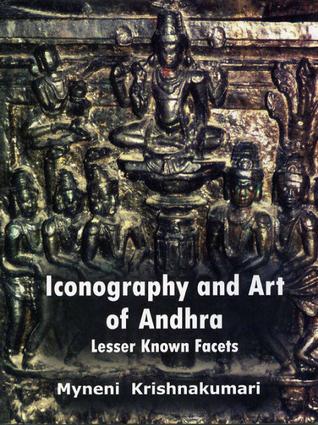
Iconography and Art of Andhra – Lesser Know Facets
By Miyeni Kishnakumari
Year: 2010
ISBN: 9789380569017
Hardcover, 26 cm., pp. 212, col. pls. 14
Price: RS. 2,000.00, US$ 44.44
In the beginning of the 20th century, T.A. Gopinatha Rao, State Archaeologist of the erstwhile Travancore State, brought to light the various elements of Hindu iconography, with all their regional variations and ramifications. It was the outcome of a meticulous search into the origin and development of Indian images including their mythological background. Since then, several art historians have attempted to delineate the art forms and icons that were peculiar to particular regions, and the book under notice represents one such attempt.
The contribution of Andhra to the development of early art and iconography of different faiths is immense. The Linga found at Gudimallam is a ready testimony. The Krishna valley played a leading role in the development of Buddhist art when its influence was at its peak. Some of the centres — for instance Nagarjunakonda, Amaravati, and Alampur — have been subjected to a detailed study. There are a number of such sites with extraordinary and significant remains that call for detailed research. This book seeks to fill some of the gap by focussing on lesser known sites located in the Karmarashtra, the region encompassing what are now Krishna, Guntur, and Prakasam districts.
The volume has seven chapters, five of which deal with the sculptural representation of the sites studied. Introducing the region and its history, the author provides a list of the temples that had existed, or are existing, in the region. The next chapter gives an overview particularly of nine temples dating from the 8th century, but based mostly on her study of temples of the 12th -14th century.
The third chapter discusses the Vaishnavite images found in the region. The author discusses at length the significance of the Trivikrama image from Pedda Cherukuru as it is comparable in iconography with other such images found across south India and which were quite popular under the Chalukyas and the Pallavas (7th-9th century). The fourth chapter is devoted to the Saivite images. Among them, the Linga with Ardhanareesvara carved on the shaft is significant. This, according to the author, indicates the assimilation of the popular aniconic and anthropomorphic forms of Siva into one acceptable to a large section of devotees of Siva and the elite ‘Vaidikas.’ The narrative sculptures representing the episodes from the epics — the Ramayana and the Mahabharata — and the Puranas like the Bhagavata are discussed in the next chapter. This kind of sculpturing came into vogue since the advent of stone temples in the 6th century. During medieval times, however, the deep-rooted Hindu values were seriously threatened.
To create public awareness, the rulers got episodes from the epic carved on temple walls, setting apart large space for such visual galleries. In later Chalukyan and Hoysala temples, one could see the epics, in their entirety, encapsulated in artistically brilliant small-framed friezes, with each episode depicted in a cosmic frame model. While the themes depicted in the narrative sculptures cover a wide range of episodes, the art lacks the finesse of their likes in Karnataka. Strikingly, the artists never let themselves constrained by narrow political or other influences in depicting popular regional themes and made it a point to give them a truly pan-Indian character. The Cholamandalam stories of ‘Periyapuranam’, related for instance to Siriyala (‘Siruttondar’ in Tamil) and ‘Kannappar’ (both belonging to the group of 63 Nayanars venerated as saints in the Tamil country), are some of the rare narrations in stone noticed in this area.
The author had taken pains to document and describe the remains in detail. The volume, which carries a number of photographs by way of illustration, is a welcome and useful addition to the existing literature on the subject.
Source: The Hindu




